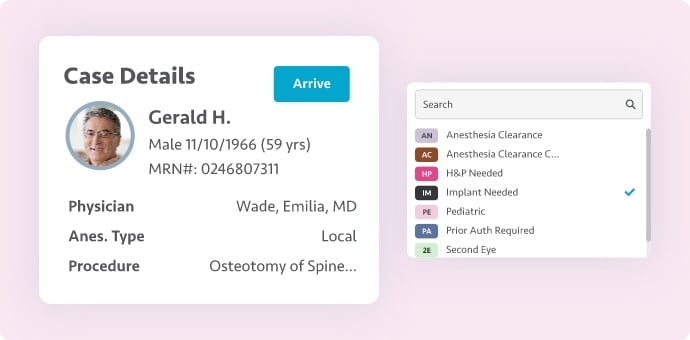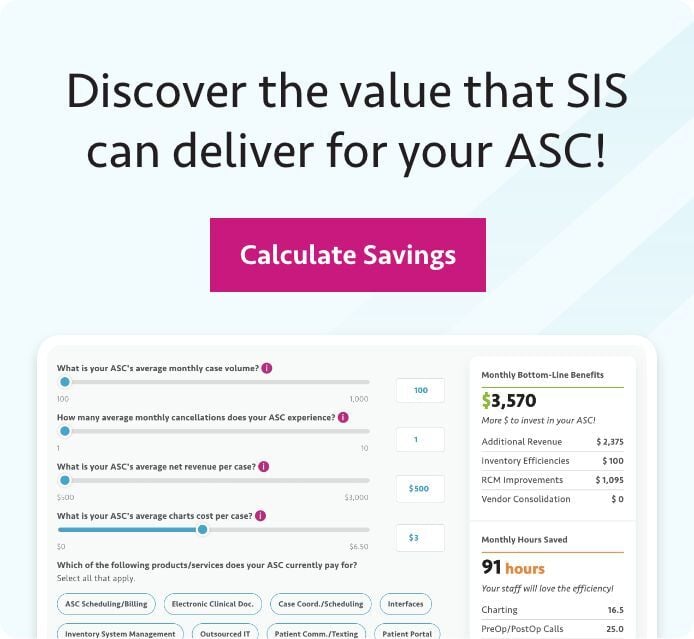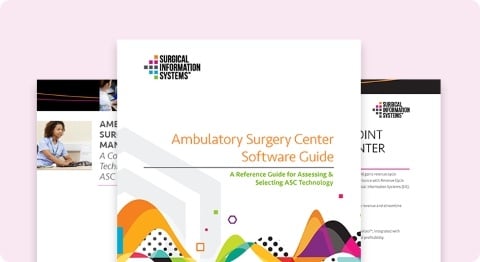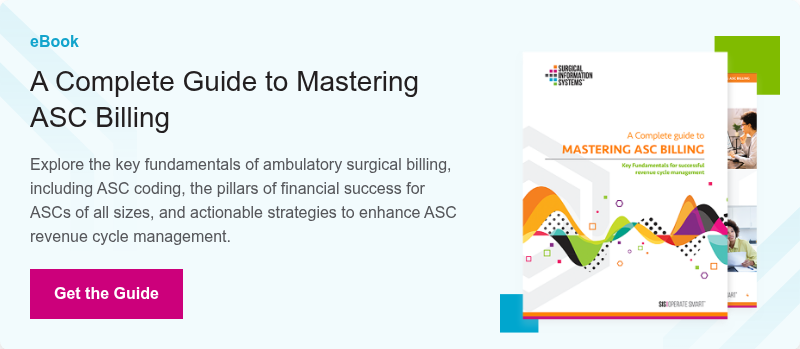Effective ASC revenue cycle management hinges on access to the right data and the ability to act on it. With so many variables in play, tracking key performance indicators (KPIs) and using analytics tools can help strengthen benchmarking efforts, which will support efforts to uncover better opportunities, guide decisions, and drive stronger financial performance.
At its core, ambulatory surgery center (ASC) revenue cycle management is largely about optimization — making tweaks here and there to enhance efficiency and improve profit margin. However, with the potential for many types of payers and patient payment plans, the complex nature of ASCs can complicate these optimization efforts. One of the primary obstacles is gaining the transparency needed to identify areas of opportunity and understand where ASC performance can improve.
With this in mind, let's take a look at the all-important process of ASC benchmarking, the essential revenue cycle metrics and key performance indicators (KPIs) for ASCs, and how ASC leaders and administrators can gather and analyze this data to improve performance across their organizations.
Root of ASC benchmarking: Understanding the critical metrics and KPIs for ASCs
While every ASC will have its own revenue cycle goals, the following represent some of the most important metrics and KPIs to track in support of those objectives:
- Days in accounts receivable (A/R). This metric measures the number of days it takes to receive money owed to your ASC for services already rendered to patients. Days in A/R is typically segmented by payer type but always expressed in terms of the number of days. For example, Medicare averages 15-20 days, while commercial insurers generally range from 21-45 days.
- Clean claim rate. This metric measures the percentage of claims that were submitted and accepted by payers without error that leads to the likes of denials and payment delays.
- Claim denial rate. This metric measures the percentage of claims that were submitted and denied. Related metrics include claim appeal rate, including how long between denial, appeal, and acceptance, as well as write-off rate (i.e., the percentage of claims that were ultimately written off).
- Net collection rate. The net collections metric measures the total amount of money actually collected after all adjustments as opposed to net charges (the amount the payer agreed to accept) and gross charges (the total amount collected before adjustments). Net collection rate is usually expressed as a percentage and represents how effective an ASC is at collecting what it was owed.
- Payer mix and associated reimbursement trends. These metrics track the different types of payers reimbursing an ASC (e.g., Medicare, Medicaid, private payers, workers' compensation) and the percentage of revenue received from each. This data can provide transparency into your payer mix and help you identify trends in reimbursement that may impact your priorities as they relate to strengthening revenue cycle management in areas like managed care contracting.
- Patient financial responsibility collection rate. This metric represents the amount of money collected from patients based upon what they are responsible for after verifying insurance eligibility and coverage. The metric can be broken down into the percentage collected from patients prior to and after surgery as well as how long it takes to collect in days.
Gathering data related to these metrics is only the first step to better managing the ASC revenue cycle through benchmarking. Next, you need to analyze the data, compare top metrics against peers in the industry, establish acceptable ASC benchmarking ranges, and identify actionable steps you and your staff can take to enhance financial performance.
How to analyze data to measure and improve ASC performance
Once you've identified what metrics and KPIs you plan to track, what's next? First, you need an effective way to reliably collect relevant data.
Given the sheer volume of data your ASC likely captures and stores, you should not pull and analyze data blindly. Doing so will make it more difficult to identify what areas represent the best — and most sound — opportunities to target for improvement.
Instead, you need a way to target the right data within specific parameters. This is where technology can make a big difference.
ASC software solutions that feature robust analytics and business intelligence capabilities can provide enhanced visibility into revenue cycle data, making it easy to set KPIs and tie them to specific data sets. Such software can generate reports that summarize ASC benchmarking performance based on data collected over a certain period or track metrics over time to deliver consistent insights into performance.
These insights can be delivered in a few ways. For example, you can identify the benchmarks you'd like to review on a regular basis and plug them into a dashboard. Every time you log into the software, you'll see the performance of your top priorities in a convenient display. This allows you to keep tabs on important metrics, like days in A/R or claim denial rate. You can also present data in easy-to-read formats like bar charts and infographics, making key takeaways clear at a glance — no technical expertise required, even for complex insights.
In addition, business intelligence tools and solutions increasingly supported by artificial intelligence (AI) can help you dive deeper into data with analytics. For example, you can run specific queries to learn more about the context behind certain data, which can help uncover the root cause(s) of a change in metric/KPI performance. You may be able to receive automated recommendations based on analyses that provide actionable next steps that should help improve performance. Some software can also flag anomalies or discrepancies that may help you diagnose bottlenecks and breakdowns or discover areas where errors occur frequently.
When you have intuitive solutions and actionable data at your fingertips, you can leverage data to improve ASC benchmarking in a variety of ways, including the following:
- Identifying revenue leakage
- Targeting staff training and education
- Optimizing ASC payment billing and collections processes
- Strengthening payer negotiations
- Enhancing operational efficiency
- Sharing visualizations of the data to better inform physician and staff decision-making
Enhancing ASC performance with the right revenue cycle partner
Doing this ASC benchmarking work on your own can still be a lot, even when you have access to these impressive technological advancements. By partnering with an ASC revenue cycle services provider, you can reap the benefits of combining great expertise with impressive technology, all with less hands-on work required. Such experts, supported by cutting-edge solutions, deeply understand the nuances of ASC performance and can help support your surgery center by doing everything from improving data collection that can boost clean claim rates to creating follow-up processes that can lead to more successful appeals and keep your A/R down. Some ASC billing companies even deliver weekly snapshots, monthly report cards, and regular check-ins that summarize KPI progress and recommend adjustments based on data insights to help further optimize revenue cycle performance.
Whether you keep revenue cycle management as an in-house responsibility or outsource some or all of this work to an experienced partner, understanding which revenue cycle metrics to track and how to collect and analyze related data is a key to continuous improvement. Once you gain a better sense of how your ASC is performing over time, you can better target the actions you need to take to optimize the revenue cycle and your bottom line.
Looking to learn more about ASC benchmarking and ways to measure and monitor ASC success? Check out this webinar all about ASC revenue cycle metrics



























